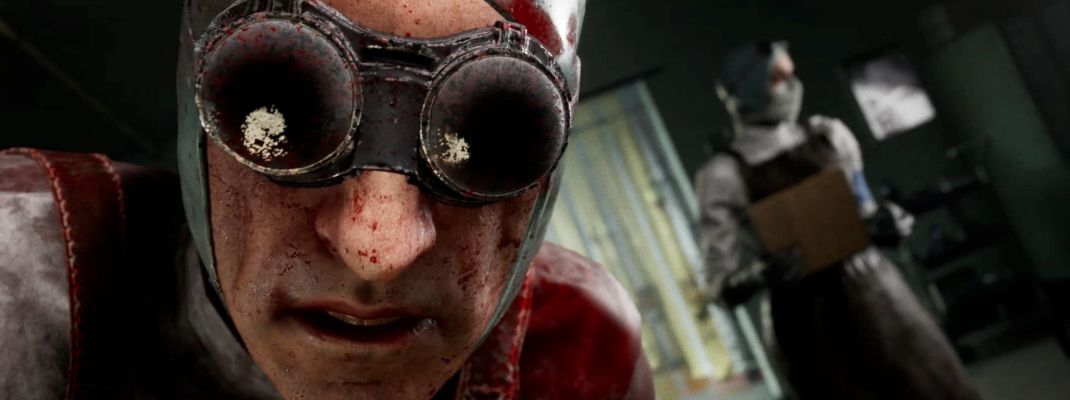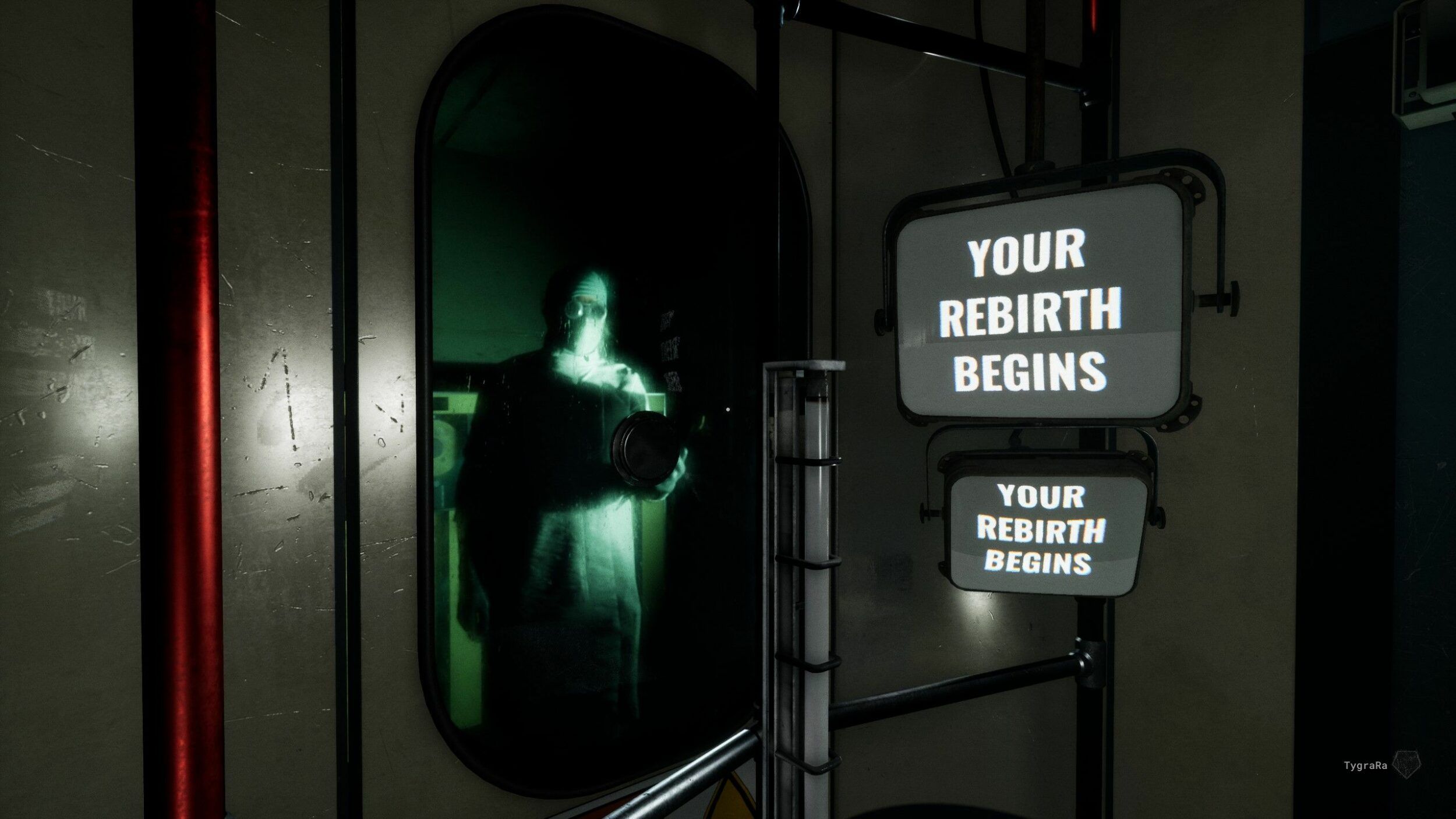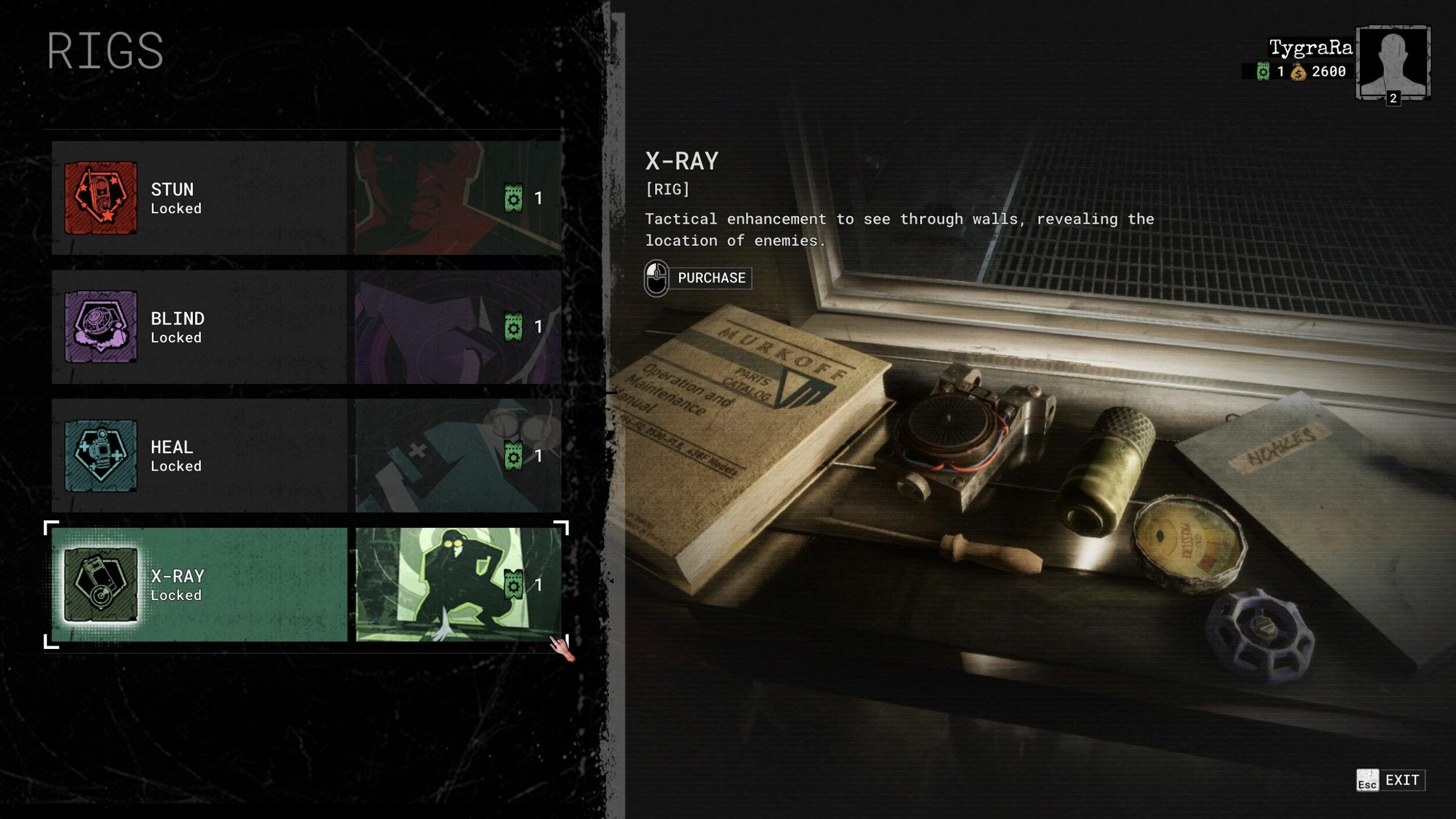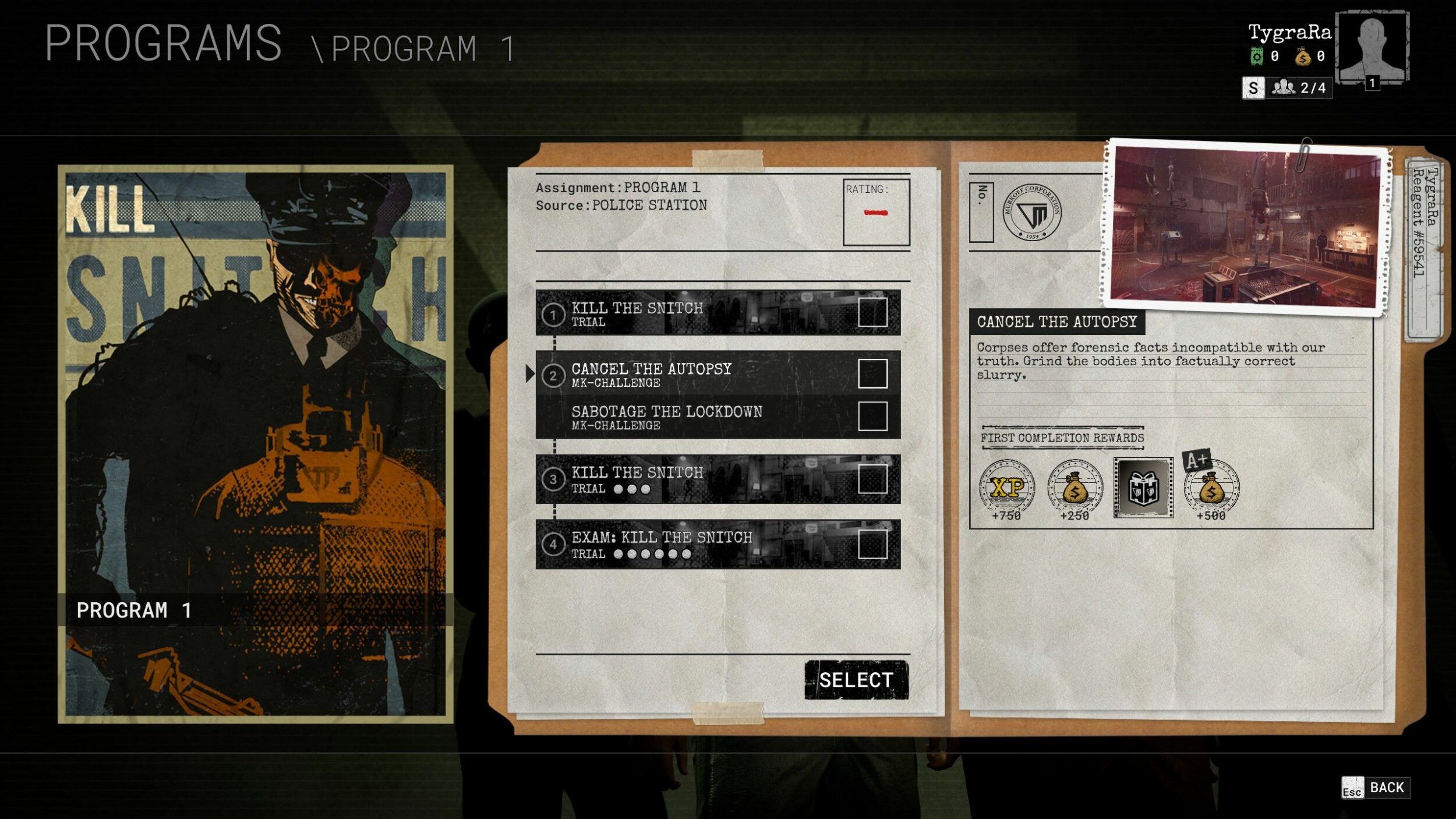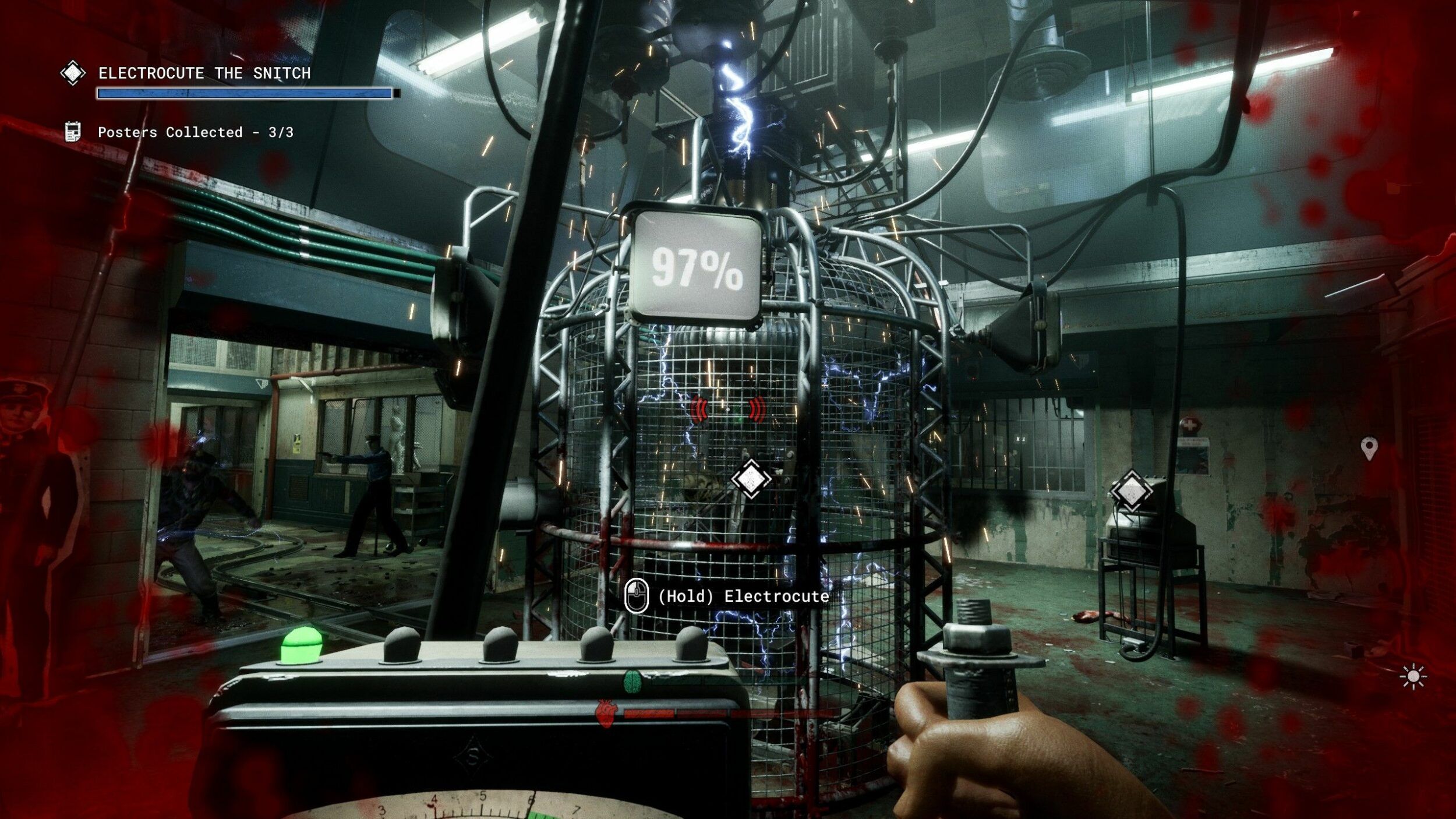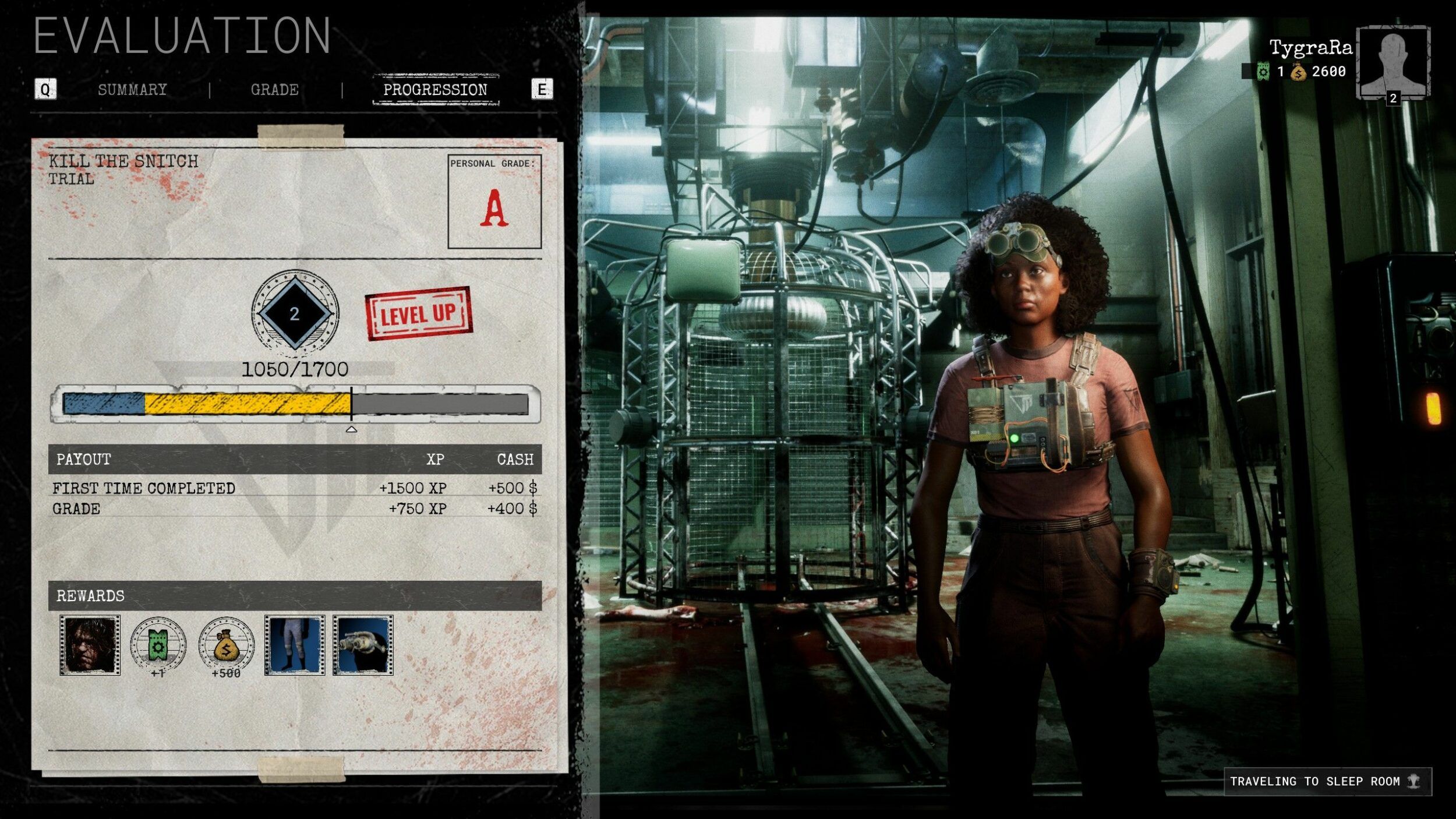The Murkoff Corporation demands our attendance in a series of…therapies…that will prepare us for a glorious rebirth. From developer/publisher Red Barrels comes a third entry into the Outlast franchise: The Outlast Trials. Serving as a prequel to the first two games, The Outlast Trials releases to Steam Early Access after six years of development. With major cultural references like the Saw franchise, the Stanford Prison Experiment and brain-washing psychology influencing its development, this title lays important context for the Murkoff Corporation and its experiments seen in the previous games. The first Outlast follows investigative journalist Miles Upshur as he attempts to uncover secrets about the Murkoff Corporation, receiving a tip about inhumane testing at Mount Massive Asylum. Upon investigation after running in terror through the dark, with only a battery-powered night vision camera to help, Miles uncovers a decades-long experiment run by German scientists. Having been part of Operation Paperclip (an actual secret U.S. intelligence operation after WWII), the Murkoff Corporation is shown to have been running all kinds of experiments -- producing monstrous “variants” in the process.
We see the Corporation rear its ugly head again in Outlast 2, where we follow a new investigative journalist Blake Langermann who finds himself searching for his wife in a small town overrun by violent cultists who believe the town is at the edge of Hell. Through the game’s events we learn that an experimental Murkoff mind control station in the nearby mountains is what caused everyone’s zealous insanity. With so much horror and destruction in this organization’s wake, what exactly are the origins of the Murkoff Corporation? That’s what The Outlast Trials seeks to answer. Flashing us back to 1959, this shadowy organization is now working with the CIA to create sleeper agents as part of the MK Ultra Program through the use psychological and physical torture. By completing a series of trials, players can earn their freedom from the vault where they are kept. Branded by developers as “co-optional suffering,” Trials is an online survival-horror experience that challenges players to problem solve in action-orientated gameplay. While the game is in Early Access and still awaiting the full polish of a 1.0 release, the title has an interesting premise and solid atmospheric gameplay that offer a good foundation to build upon.
Staying true to the many inspirations for the title, these trials will test players' decision making in stressful situations. The idea being that, under extreme duress, a test subject’s true potential will be unlocked to further the overall group’s goals. To create the harsh conditions needed, entire set pieces are constructed for us to scamper through and survive. There's an eerie, uncanny feeling of running for your life through a fake movie set while observers and scientists watch our progress through windows or catwalks. Where a previous title like Outlast 2 made players feel like a rat in a maze without knowing what lies beyond, Trials asks players to confront the knowledge that they are rats in an experiment. Just imagine a gory, stress-fueled version of The Truman Show where everyone is trying to murder you. With various nooks, crannies and shortcuts that feed into other areas, working our way through a trial feels like a true maze. With a growing sense of dread that escalates as we progress, players will need to consider resources, stamina and strategy to tackle these tests. Not only must we complete tasks within trials, but we must avoid all manner of variants released into the arena to make our job even more difficult.
As is tradition, night vision makes a return with goggles that are unceremoniously drilled into your head that give brief respite in the darkness -- you can see in the dark when enemies cannot. It heightens the stress when you have to hide in a corner and wait for a patrol to pass by a hair’s-breadth away before you can continue. It provides the slightest advantage that can mean the difference between life and death when you can throw a distraction from the safety of the pitch black. But, as always, caution must be taken about the battery power for night vision if you wish to continue befriending the dark. Red Barrels continues refining their commitment to ambiance, as these sets can feel terrifying to navigate through. Not only are they peppered with unsettling mannequins (that may turn to look at you in a moment’s notice), but environmental effects like steam, phones ringing, lights popping and more hit the stress levels at just the right time to keep players on edge. Once we’ve frequently encountered the many variants around the map, they do become less scary and more stressful. Environmental design takes this into consideration to keep your eyes and ears on constant alert -- and blood pressure up.
You probably won’t survive your first trial -- whether solo or cooperatively. While the game was developed for up to four-player cooperation with the ability to also work alone, there are so many tasks across a wide map that need to be completed. While we may find resources like batteries, medicine, tools and non-lethal projectiles for distracting enemies, there's still a level of familiarity that's required with each level. Additionally, it isn’t until we at least level up once that we gain access to additional gear that yields advantages. Players can customize their loadout based on various Rigs that offer abilities like group healing, x-ray vision through walls and even stunning enemies. Leveling up further yields after successfully completing trials gains access to additional power ups available within the vault that serves as a preparation hub. Talking to the nurse at the pharmacy can help us acquire drugs that enhance physical properties in a trial. Eventually we can add “amps” to our loadout to give us even more options for support and flip the trial to our favor. Yet none of this is available to begin with and turns into various trials and errors.
Trying the very first trial, “Kill the Snitch,” I found myself painfully wandering around the Police Station stage searching for my objectives. While there are chevrons to indicate some objectives, trying to find the way there as a first-timer felt like its own task on top of all the others I needed to perform. Even playing cooperatively is like the blind leading the blind (in some cases literally when battery power runs out). It wasn’t until a couple of different tries that I was able to learn from my mistakes. Studying the unique systems for enemies as they act differently based on their type, learning the map, knowing my closest exits and hiding sports all took time. Even after figuring out how to acquire all the pieces to the trial, we still may not have the proper execution in place and a better, more efficient mode of completion may blossom from the putrid macabre. The Outlast Trials stays true to the franchise’s theme of body horror and the physically obscene. While repeated encounters with enemies normalizes them and ultimately lowers our fear of them, Trials plays upon the unique systems in place that make great use of atmosphere and pressure on the player. Being a horror connoisseur, I often dive headlong into game mechanics to find the joy in being scared -- I count it as a “win” for the game if I am. Yet the bravery I’ve often relied upon felt like a small voice in the back of my mind as the hiss of steam surprises me in the dark, the cackling of enemy patrols far off keeps me rooted in place and I desperately hope to find a place to hide that isn’t inhabited by a naked babayaga who will jump out to beat me senseless before moving into another hiding spot like a murderous jack-in-the-box. Between the main boss of the trial, variants that are periodically released into the arena by testers and the general grunts that roam the set, Trials breaks you down by dividing your attention.
Having completed trials both solo and cooperatively, Red Barrels deserves praise for working on a project to try and suit players’ preferences when it comes to teamwork. You're able to matchmake up to a party of four, meaning that you can choose if we want a duo or trio as well. With voice chat and a communication wheel full of gestures and commands, the goal is to work together. When in a group, working as a unit will yield the greatest success. This is dependent on other players, though. It could occur where a group of four has one veteran player and three newer ones. While cooperative play offers a lot of advantages like group numbers and division of labor, it also brings its own challenges with coordination. In a title like Trials, working together is key. However labor is divided, though, there's an even higher chance of success when players have understanding of the trial already. Yet this can be its own challenge when a variant is introduced into the arena and players run for their lives in various directions. It also speaks to the overall theme that we are “stronger together.” But after a few failing tries and finally nailing down my approach, I found myself receiving a higher test grade upon completion than when working with a relatively newer player in a team. Receiving an “A” was no easy feat, though. For all the perfect scores I achieved alone, I had to suffer the laundry list of tasks. While there's technically no difficulty variable in the game, difficulty instead comes from the way the trial is executed.
But being alone places a larger burden on the player in my opinion. While a solo player gets a few extra lives to complete their therapy and coop requires reviving teammates, it also means facing down threats alone. Now there’s no one to launch a brick at an enemy’s face to interrupt their attack on me, now there isn’t anyone to run a distraction so that I can complete tasks. In the first trial “Kill the Snitch,” we must deliver an inmate to an execution chamber and kill him. But to do this, we must wheel said inmate along a track within the police station that essentially makes a giant circle around the entire set. Before getting very far, the power goes out and prompts us to turn on a couple of generators in the basement. The same trials will procedurally generate different assets with certain spawn locations. While the generators in the basement weren’t in the same spot every time, I started to learn where I could look to find them – this cut down my time significantly since the longer we wander around in the dark means the less battery power we have to see in the dark…which then leads to more bumping around and wasting time. Many of the mini-games used to power machines within Trials are reminiscent of the generator mechanics in Dead by Deadlight. Because sound is an important indicator, however, you must be careful as we start up these generators. Solo, I’d have to slowly fill the generator with fuel found elsewhere, tinker with the power and then hide. By this point, the big bad Cop boss that's hunting me down may come to inspect and search for me. It’s slow work to tinker away at objectives, pause to hide and then get back to it once the coast is clear. But, once both generators are back on, we can start moving our snitch to the execution chamber.
Halt, citizen. Before getting to the execution chamber, you must now find keys hidden in corpses around the station. With a lot of ground to cover, this is where the solo experience feels tedious since there are about ten different corpses located all over the map – only a few of them have the correct keys that we actually need. Reaching into an incorrect body means getting a nice little electroshock therapy that can kill you if health is too low. The title does tweak certain elements when playing solo, like only needing to find three collectibles for extra points versus the five when in a group. Paring down the number of bodies spawned to search through may benefit the solo experience -- as it forces us to search every corner of the map to find them and possibly waste time. But let’s say all the keys have been found. While enemies are still patrolling, you must push the loud execution chair along this rickety track towards the death chamber -- our inmate is less happy about this and may start screaming to attract enemy attention too. But once we find a good opening, we can finally wheel him to his death. Okay, the stage is set: the snitch is set up in an electric chair waiting to get deep fried. It’s not as easy as pressing some buttons, however, as now levers must be pulled and held to power the chamber to 100%. This is painfully slow if solo. It’s also just generally painful as now Cop boss has been released from the basement and will try to murder us in the process of powering up the execution chamber. So, not only do we have to power up this device, but we must also run and hide from the boss if we wish to keep living. Once again, I found myself engaging the lever for just a bit, and then turning tail and hiding as soon as I saw the electric glow of Mr. Cop’s shock baton.
Eventually, with careful eyes and clear hearts we’re able to crisp our inmate like Christopher Walken at the end of Batman Returns. But wait, we’re not done. Now we must escape the arena. Kudos should be given to Red Barrels for the construction of enemy systems because they do respond to progress within the trial. Once objectives have been completed and it’s time to leave, enemies in the stage will route themselves towards the exit and guard it. After running around to turn on power and searching for keys and pushing a man in a chair and then juicing up execution to kill while also hiding for my life and finally trying to sneak out of the trial -- wow that’s a lot to do for one person. My first attempts ended in failure while also taking over an hour (in one failed trial I took ninety minutes). It is possible to learn hard lessons, so after retaking my test a few times, I was finally able to pass it. There's a lot to do alone, and it feels overbearing in comparison to cooperative play. Solo mode could benefit from additional tweaking so that it doesn’t feel like such a mountain to climb. And yes, just like in cooperative play, there are benefits and drawbacks to playing solo. One of the nice things about being solo is that you can direct the flow of traffic better -- meaning that you can usually force enemies to move elsewhere or you can take advantage of a lack of enemies in an area and run around. As someone who is self-reliant (maybe to a fault), I did find solo play satisfying after learning the ropes. It just may take a few tries to get to that comfortability.
Congratulations! You survived a trial. It will be the first of many, but now with experience points and currency we’re able upgrade our loadouts to stand an even better chance. We’ll need it too, as there are three different programs with various trials within them. Each program is a cluster of trials that will unlock through progression. Successfully completing these will unlock Program X where the challenge is elevated. Extra variables are added and seasonal trials will be available. With money we earn from completing trials, we can buy cosmetic items for ourselves or our new room within our cozy vault prison. By earning ten tokens through trials, players can earn their freedom and be reborn as an instrument of the Murkoff Corporation. With hopes to add more content and special rewards in the future, Red Barrels looks to set up The Outlast Trials as a window into the secret origins of the series’ main antagonist.
The Outlast Trials expands on lore fans have been seeking while providing a unique “co-optional” take on survival horror. Staying true to their roots, Red Barrels continues to master elements of ambiance and stress. By introducing various systems for enemies and environmental effects, Trials knows when to elevate the fear factor when there’s a lull in activity. Lulls are not common, however, as there are always enemies constantly patrolling and hiding throughout the level. From screamers that attract NPCs, to varying grunts that patrol, senses remain heightened the entire time. And while it's common to encounter enemies repeatedly to the point where they don’t seem so scary anymore, Trials balances this by adding a lot of pressure to the situation with some stressful multitasking. When we stop yelping because of jump scares or running into bosses, we’re sweating just a bit while tinkering with machinery and keeping a peripheral eye out for danger. The Outlast Trials excels at creating atmosphere with environmental systems, sound design and enemy movement for an intense horror experience. While cooperation with up to a party of four is optional, and there aren’t official difficulty settings, it does feel more advantageous to have teammates. Solo trials are possible and viable, but the learning curve is much steeper alone than with others. Trials also feels more punishing at its very start when we don’t have access to upgrades and skills. Yet The Outlast Trials shows promise as it enters Early Access and continues to finesse a solid foundation.

